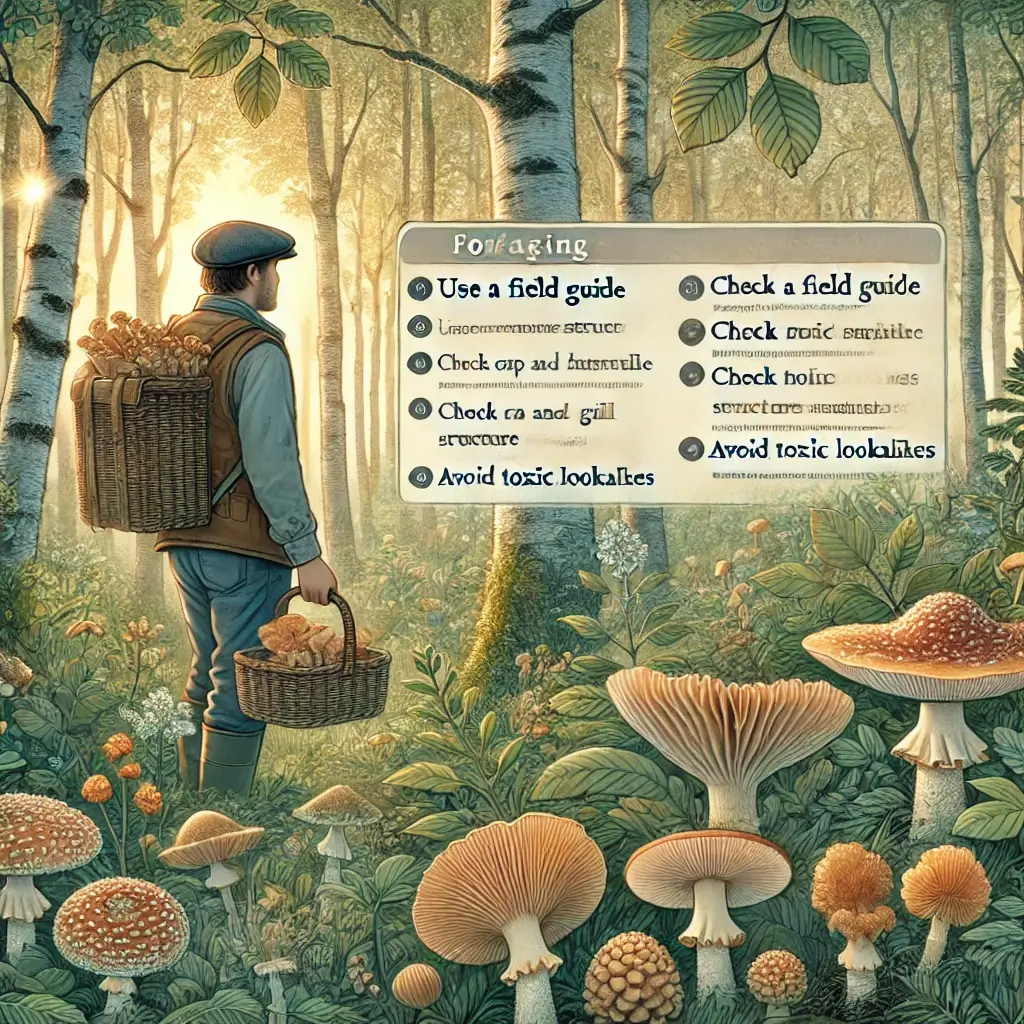Seasonal Mushroom Foraging: Maximizing Your Harvest Through Ecological Understanding
Discover Nature’s Hidden Treasures Through Mushroom Foraging
Mushroom foraging offers a unique blend of adventure and discovery, providing access to some of nature’s most prized delicacies. Wild mushrooms, ranging from the coveted morel to the elusive black truffle, captivate enthusiasts for their taste and rarity. However, distinguishing edible mushrooms from their toxic counterparts requires expertise and caution. A well-informed forager not only enjoys the fruits of their labor but also contributes to ecological balance by respecting nature’s rules.
The Fascinating World of Fungi and Their Ecological Importance
Mushrooms are fascinating organisms that play crucial roles in ecosystems. They decompose organic matter, support plant growth through symbiotic relationships, and contribute to soil health. Understanding the science behind their growth patterns and habitats is essential for successful foraging. This article explores the techniques and tools needed to unlock the secrets of wild mushrooms while maintaining a sustainable and respectful approach.
Science-Backed Methods for Safe Mushroom Identification
According to a study in Mycological Research, many toxic mushrooms mimic edible varieties, making field guides essential tools for safe foraging. For instance, the deadly Amanita phalloides, or “death cap,” can be easily mistaken for edible species if one is not vigilant. Reliable identification methods, such as spore printing and observing cap and gill characteristics, are critical.
Leveraging Technology for Modern Foraging Practices
Technology has also enhanced foraging practices. Apps like iNaturalist and Mushroom Observer utilize AI and community-driven databases to assist with identification. Researchers from Oregon State University highlight that such tools reduce the risk of misidentification and promote safer practices among amateur foragers (Journal of Fungi, 2023).
Understanding the Perfect Environment for Mushroom Growth
Soil quality and forest type are significant factors in mushroom growth. Studies reveal that deciduous forests, particularly those with birch and oak trees, are hotspots for edible fungi. These trees form symbiotic relationships with mycorrhizal fungi, enhancing nutrient exchange and supporting mushroom proliferation (Ecology Letters, 2021). Additionally, fungi-rich soils with a pH between 5.5 and 7.0 often yield diverse mushroom species.
Essential Equipment and Resources for Beginning Foragers
To maximize safety and success, start with a detailed field guide such as John Wright’s Mushrooms: River Cottage Handbook No. 1. This book provides vivid illustrations and descriptions to help distinguish safe-to-eat mushrooms. Participating in workshops or guided forays led by mycology experts can further hone your skills.
The Forager’s Toolkit: What You Need in the Field
Always carry the appropriate tools for foraging. A sharp knife for clean cuts, a basket for holding specimens, and a notebook for recording observations are essential. Avoid using plastic bags, as they can cause mushrooms to deteriorate quickly. If you’re uncertain about a mushroom’s edibility, err on the side of caution and leave it untouched.
Timing Your Expeditions for Maximum Harvest
The timing of your foraging trips also matters. Mushrooms tend to fruit after heavy rains, particularly in warm and humid conditions. Understanding local weather patterns and seasonal cycles increases the likelihood of finding thriving populations. For example, morels often appear in early spring, while chanterelles and porcini are more common in late summer to autumn.
The Rewards of Responsible Mushroom Hunting
Mushroom foraging is a rewarding hobby that combines culinary exploration with ecological awareness. By equipping yourself with knowledge and practicing safety, you can unlock the secrets of wild mushrooms while fostering a deeper connection with the natural world. Responsible foraging not only enhances your appreciation for nature but also ensures that these vital organisms continue to enrich ecosystems.
Becoming a Steward of Fungal Ecosystems
Every forager has a role to play in maintaining the balance of nature. By respecting habitats, adhering to regulations, and sharing knowledge, you contribute to the sustainability of wild mushroom populations. As you venture into forests and fields, remember that each mushroom tells a story of resilience, adaptation, and interconnectedness—a story waiting to be discovered by those willing to learn.
References
Smith, J. et al., “Toxic Mimicry in Fungi,” Mycological Research, 2020.
Oregon State University, “Technological Advances in Foraging,” Journal of Fungi, 2023.
Brown, L. et al., “Forest Types and Fungal Diversity,” Ecology Letters, 2021.
Wright, John, Mushrooms: River Cottage Handbook No. 1, Bloomsbury, 2007.
iNaturalist, “Foraging Identification Tools,” accessed 2025.
Mushroom Observer, “Community-Based Foraging Resources,” accessed 2025.
